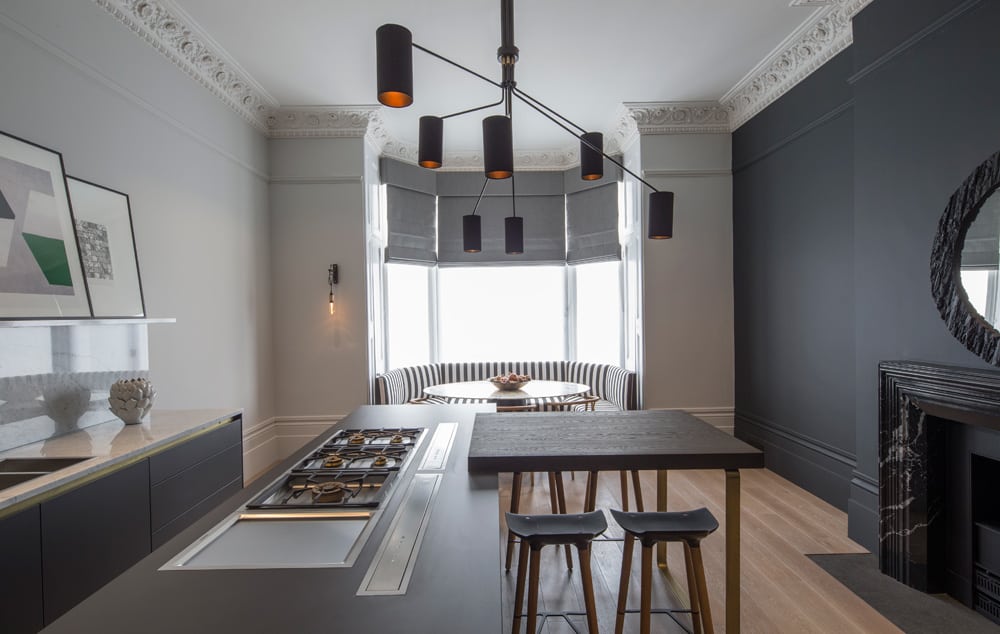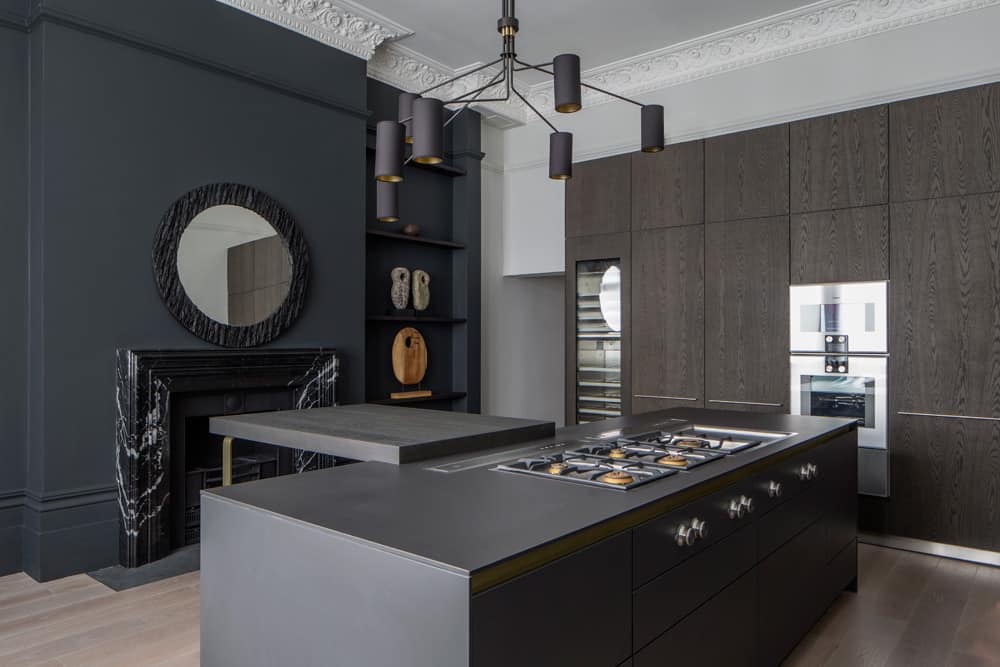
The term open-plan living conjures up thoughts of space, light and a glorious expansive feeling that presents endless possibilities. But open-plan doesn’t always translate into a homely or inviting space and furniture pieces can often seem out of place or isolated within the room.
A few considerations can help turn a large, open space into a welcoming and chic area for entertaining.
Plan the space
Consider how the bespoke interior design of the space can attain a relaxed, social setting, while at the same time meeting your clients’ specific requirements for the room. For instance, in our Belsize Park residential project (pictured above), our client wanted to adapt the existing reception room of their period property into a large kitchen and dining area that would meet their requirements for cooking and dining, yet still allow the space to feel like a room where they could entertain guests, and not necessarily like a kitchen. In this case, a large modular kitchen island (pictured below) felt more like freestanding furniture and banquette seating positioned in the large bay window area allowed the free flow of cooking, while chatting and dining in this social entertaining space.

Using distinct levels
A unique approach to making the most of open-plan living is to separate the space at various levels. A kitchen and dining area at one level and sunken seating alongside can create a place for entertaining with effortless flow between each. The sunken seating area can take on a relaxed approach with furniture kept low, including a large coffee table and spacious leather sofas. Keep the flow unrestrained by using soft, sheer drapes – full-length if possible and that extend across the full width of the room to wash light through. Separate the open-plan kitchen with an island or counter that not only partitions the space, but stands out as a focal point. Keep appliances minimal in order to realise a holistic approach to the uninterrupted flow of space.
Bedroom privacy
It’s not only open-plan entertaining spaces that might need partitioning. In a bedroom, a dressing space or secluded desk area can be separated by a divider that can perform the double function of a headboard or simply a discreet screen that reflects light and creates a warm ambience in the area beyond.
Keeping open-plan spaces clutter-free
When real life takes over, this can be a challenge. But, as designers, it’s our responsibility to incorporate solutions that will enable our clients to keep an open-plan space elegant, uncluttered and ready for effortless entertaining. A sliding pocket door can be used to partition off an area within the space as well as adding in useful shelving and storage solutions.
The flexibility of space
If a client wants the flexibility of both open-plan living and a more structured look, a chic option is to specify curtains that can be drawn across the room to divide the area. Many of our clients love this idea, which allows them to partition the space so that a chef can prepare dinner in one area, while they entertain in a more intimate dining space on the other side of the curtain.
A glass sliding door is another option that will divide the area without losing that feeling of space. Interior sliding doors are perfect for sectioning off living areas, with countless options to choose from. For a modern feature, choose a door that emulates Crittall windows with metal frames.
The most important aspect of designing an open-plan kitchen and living space, whether embracing the space in its entirety or partitioning it off to create smaller areas within it, is to make it so that it meets the exact needs of your clients and their family.
To view the full feature in the Special Show Issue of kbbreview magazine click here.
Photography by Richard Waite